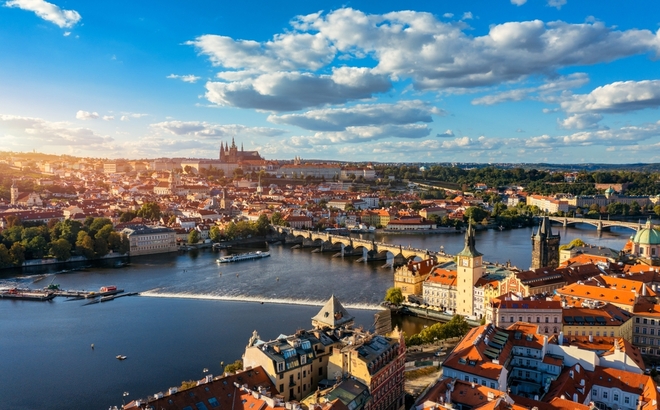Visiting Prague

An enchanting and unique city, Prague is brimming with historical and architectural treasures that you can discover over a long weekend! Need inspiration for your next trip to Prague? Take a look at our detailed 3-day itinerary with places to visit in Prague and everything you need to know to travel stress-free.
3 Days in Prague
Wondering how long it will take to visit Prague? You can discover the Czech capital's main tourist attractions in three to four days. And to make sure you don't miss a thing, here's a complete itinerary:
Day 1: Prague’s Old Town
Your trip to Prague begins in the majestic Old Town Square. Go back in time with the colourful Baroque buildings and fascinating medieval clock before continuing on to Josefov, Prague's Jewish quarter, to see the monuments, including the old Jewish cemetery, town hall and numerous synagogues.
Continue towards the Charles Bridge. Admire the Baroque statues that adorn the monument (including the famous statue of St. John Nepomuk), enjoy the view of the Vltava River and stop to watch the street performers.
Head for Prague Castle. Climb Opyš hill to see the world's largest medieval castle. Explore the complex of palaces and buildings connected by picturesque alleyways. Don't miss the panoramic view of Prague from the heights of the castle and St. Vitus Cathedral, the religious symbol of the Czech state.
Head down through the castle gardens and take the funicular to Malá Strana for a relaxing evening in one of the local restaurants.
Day 2: Prague's Bohemian and Cultural Districts
Start your day in the Žižkov district, one of the Czech capital's most picturesque and captivating neighborhoods. Wander around and stop at one of the cafés for a traditional pastry.
Continue your day with a visit to the Vinohrady district, known for its cafés, vintage boutiques and relaxed atmosphere. Don't miss the Municipal House with Art Nouveau architecture and cultural exhibitions.
Finally, head back to the city centre to explore the Nové Město (New Town) district. Don't miss Wenceslas Square, the National Theatre and the Dancing House. And of course the trendy restaurants.
Day 3: Nature in Prague
For your last morning in Prague, try a quieter atmosphere. Take the metro to Stromovka Park. Once a royal hunting reserve, this English-style park is the ideal place for a stroll and a picnic.
Have a little time left? Take a detour to Vyšehrad hill for superb views over the city and visit the old fortress, cemetery and the Basilica of St. Peter and St. Paul.
The Best Time to Visit Prague
Prague's magic happens all year round! However, the best time to visit if you want good weather in Prague is from May to September, particularly outside school vacations to avoid the crowds. Not worried about the cold? Visit Prague in December! As the holiday season approaches, the city comes alive with its famous Christmas markets, enveloped in a magical, warm and festive atmosphere.
Which Visa for a Trip to Prague?
As member of the Schengen Area, the Czech Republic adheres to the short-stay visa policy of this area of free movement of people, meaning that foreign travelers from certain countries are subject to Schengen visa requirements.
Are you a citizen of the European Union or Schengen Area (or Associated States)? No need for a visa. You can come to the Czech Republic and Prague and all of the Schengen Area countries with a national identity card or passport valid for the duration of your stay.
Are you a citizen of a country outside the EU and Schengen Area? Depending on your nationality, you may need a visa to travel to Prague and the rest of the Schengen Area, even for a short trip for tourism. See whether your country is on the Schengen visa-free list or not here.
How Do I Get a Schengen Visa?
Do you need a short-stay Schengen visa? Go to the Czech consulate's website for your country of residence to find the information you will need and start your Schengen visa application. Please note: if you wish to visit several countries in the Schengen Area, you must specify this in your application.
Once you have obtained your Schengen visa, be sure to keep your supporting documents with you, including your proof of insurance covering medical and hospital expenses for a minimum of €30,000. The border police may request them when you enter the Schengen Area.
Which Schengen Visa Insurance Should You Choose?
Choose peace of mind for your Schengen visa application and when crossing the border with Schengen travel insurance policies from Europ Assistance.
Starting at 3 euros, Europ Assistance's Schengen visa travel insurance covers you for medical expenses of up to €60,000 in the event of illness or accident, as well as additional coverage in all Member States of the Schengen Area and European Union, as well as the United Kingdom.
Tweet
